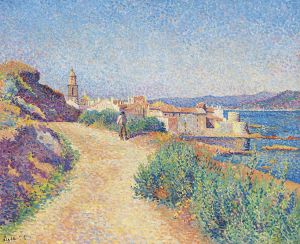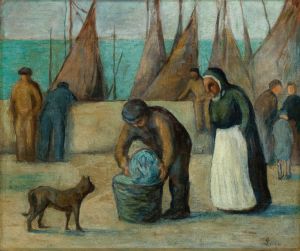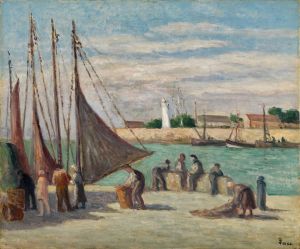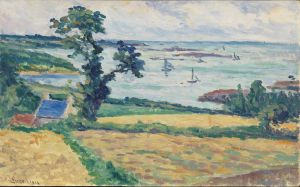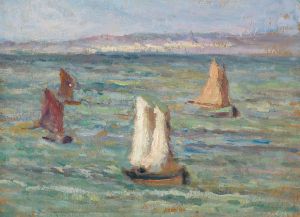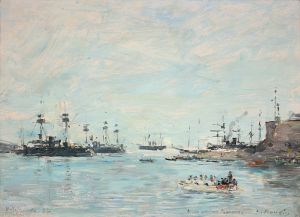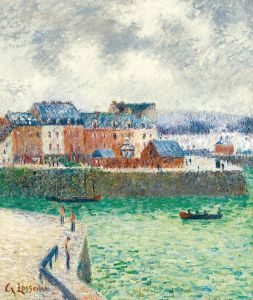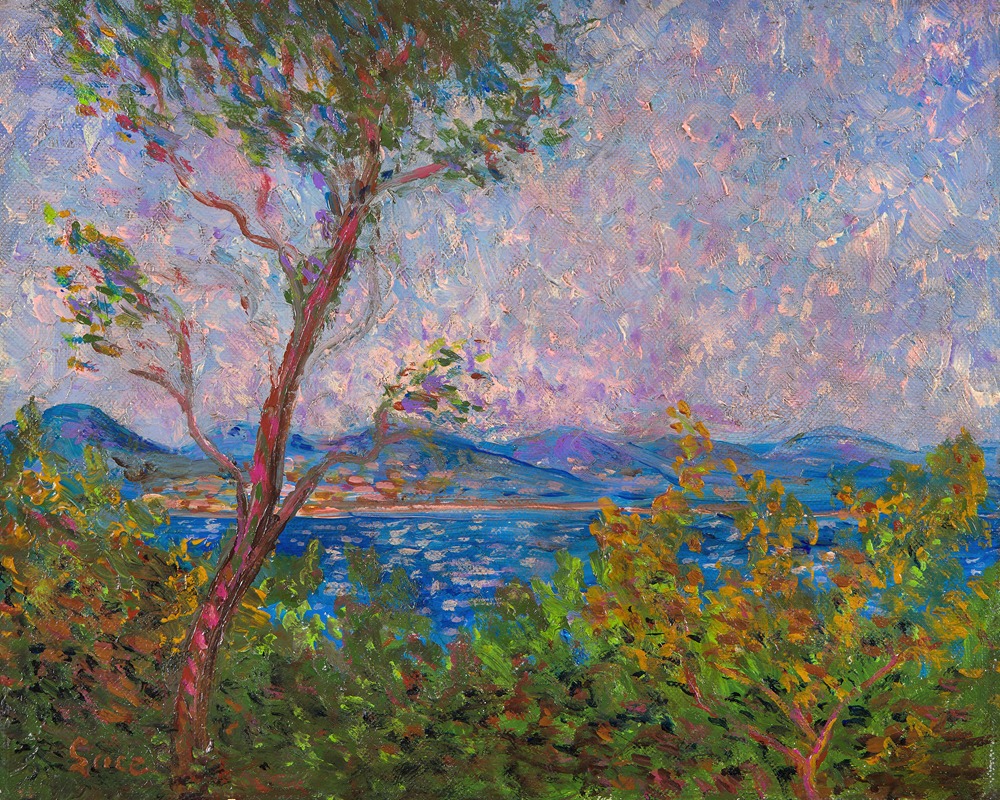
Saint-Tropez au bord de la mer Méditerranée
A hand-painted replica of Maximilien Luce’s masterpiece Saint-Tropez au bord de la mer Méditerranée, meticulously crafted by professional artists to capture the true essence of the original. Each piece is created with museum-quality canvas and rare mineral pigments, carefully painted by experienced artists with delicate brushstrokes and rich, layered colors to perfectly recreate the texture of the original artwork. Unlike machine-printed reproductions, this hand-painted version brings the painting to life, infused with the artist’s emotions and skill in every stroke. Whether for personal collection or home decoration, it instantly elevates the artistic atmosphere of any space.
Maximilien Luce's painting Saint-Tropez au bord de la mer Méditerranée is a notable example of the artist's work and his connection to the Neo-Impressionist movement. Painted in the late 19th or early 20th century, the artwork captures the scenic beauty of Saint-Tropez, a small coastal town on the French Riviera, situated along the Mediterranean Sea. Luce, a French painter, was known for his mastery of light and color, as well as his use of the Pointillist technique, which involved applying small, distinct dots of color to create a cohesive image when viewed from a distance.
The painting depicts the tranquil shoreline of Saint-Tropez, a location that became a popular subject for many artists during this period due to its picturesque landscapes and vibrant light. Luce's composition showcases his skill in rendering the interplay of light on water and the surrounding environment, a hallmark of Neo-Impressionism. The movement, pioneered by Georges Seurat and Paul Signac, emphasized scientific approaches to color and optical effects, which Luce adopted and adapted in his own work.
Maximilien Luce was deeply influenced by his contemporaries, particularly Signac, who also spent time in Saint-Tropez and helped establish the town as an artistic hub. Luce's connection to the region and his dedication to capturing its essence are evident in this painting. The work reflects his ability to balance technical precision with an emotive portrayal of the natural world.
While specific details about the exact year of creation or the current location of Saint-Tropez au bord de la mer Méditerranée are not readily available, the painting remains an important representation of Luce's artistic legacy and his contribution to the Neo-Impressionist movement. It also highlights the broader trend of artists seeking inspiration from the Mediterranean coast during this era, drawn by its unique light and vibrant scenery.
Maximilien Luce's broader body of work includes landscapes, urban scenes, and depictions of working-class life, all characterized by his commitment to social and political themes. However, in works like Saint-Tropez au bord de la mer Méditerranée, his focus shifts to the serene and timeless beauty of nature, showcasing his versatility as an artist.
This painting is a testament to Luce's technical skill and his ability to evoke a sense of place, making it a valuable piece within the context of Neo-Impressionist art.






